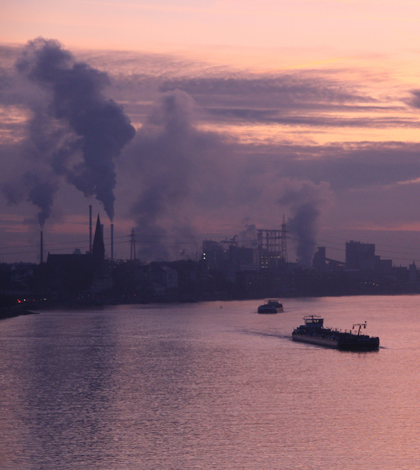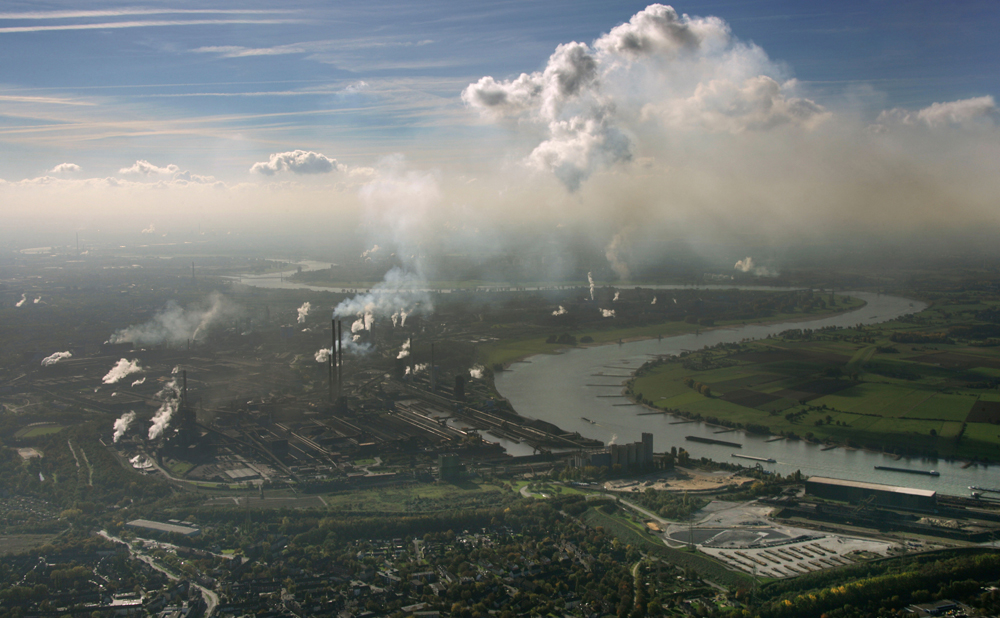Air pollution increases river flows through influences on plants and sunlight

Air pollution over the Red River in Germany (Credit: Martin Fisch, via Flcikr/CC BY-SA 2.0)
Most people recognize air pollution as a decidedly negative byproduct of many human activities, but a new study shows that particulate pollution has an unexpected impact on waterways.
“Air pollution has rather bizarrely increased river flows,” said Peter Cox, study author and professor of climate system dynamics at the University of Exeter. The study, published in Nature Geoscience, developed out of earlier research looking at the effects of carbon dioxide on plants.
When exposed to enough CO2, plants close their stomatal pores to conserve water, thereby reducing transpiration. With plants using less water, runoff levels increase. But particulates further amplify that runoff by influencing processes that wick water into the air.
“Aerosols cut off radiation reaching the surface,” Cox explained. “They reduce the sunlight, basically. That means you’ve got less energy for evaporation.”
“It’s kind of ironic that what we consider to be quite nasty, dirty pollution produced from burning dirty coal produces bright particles in the atmosphere, but it does,” Cox said.
The researchers examined particulate pollutants over major river basins in the northern hemisphere and looked for variances in river flow rates relative to projections based on surface meteorology. A wealth of historical data showed that river flow was 25 percent higher than expected in particularly polluted basins in the early 1980s — when sulphurous coal burning led to increased particulates in the atmosphere. Although data were readily available, Cox said it wasn’t so easy to determine which of them were useable.

Air pollution over the Rhine where it flows through Westphalia, Germany, Europe
“There is a lot of river flow data — some of the longest records we’ve got on the environment are for river flows,” Cox said. “The big issue here is to work out which basins you can use that don’t suffer from the effects of irrigation.”
Agricultural activity can reduce river flow in a region by diverting water for irrigation. The researchers knew that heavily irrigated river basins could skew the dataset, so they excluded those basins from the study. Shifts in land cover, the reflectivity of different particulates and climate change over the past several decades made the modeling even more of a challenge.
“Large scale modeling of a climate system is a complicated process,” Cox said. “In this case the key was working out how to separate the different effects on river flows.”
The polluted air of 1980s North America and Europe can offer some insight into the future of rapidly developing economies, such as India and China, Cox said. Those countries can expect to face familiar hurdles, such as acid rain, as their industrial sectors expand. Though increased river flow might seem like a positive result of air pollution, especially in areas where water is scarce, Cox isn’t about to suggest that we ignore the problem — quite the opposite, in fact.
“I don’t think anyone in their right mind would say, ‘Let’s leave the air dirty,’” Cox said. “There’s plenty of reasons to clean up the air, you just need to be aware there will be changes in water resources.”
“Because the Earth system is so connected, you do something to one part of it and there will be ramifications on another part,” he said.
Image: Air pollution over the Red River in Germany (Credit: Martin Fisch, via Flcikr/CC BY-SA 2.0)




0 comments